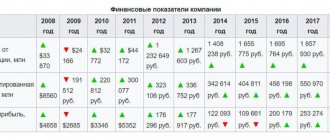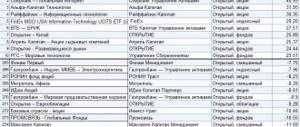On September 11, 2014, the monthly report of the International Energy Agency (IEA) was published, in which the forecast for global oil demand in 2014 was lowered from 92.9 to 92.6 million barrels per day. After this, a decline in oil prices began, which accelerated in early October after the publication of the International Monetary Fund (IMF) World Economic Review, which lowered the forecast for global growth in 2014 from 3.4 to 3.3%, as well as negative oil demand forecast from the US Energy Information Administration.
Oil market crash
On October 9, Brent oil dropped below $90 per barrel. Following this, it became known that Iran and Saudi Arabia had reduced oil prices under export contracts. The fall in prices continued after on October 14, in a regular report, the IEA worsened the forecast for oil demand in 2014 to 92.4 million barrels per day, and in 2015 to 93.25 million barrels. Another important factor was the unwillingness of the Organization of Petroleum Exporting Countries (OPEC) to agree on production cuts.
At the auction on November 12, the price of Brent oil dropped to $80 per barrel. On November 14, in the next IEA report, the forecast for oil demand in 2015 was reduced to 92.6 million barrels per day, which accelerated the fall in prices. , 2014 quotations reached $55.27 per barrel, thus, oil prices fell by 51% over the year.
On January 5, 2015, Brent prices fell below $50, the minimum price was noted on January 13 - $45.13 per barrel.
The rise in price is anticipatory
The increase in oil prices in the first half of January is mainly due to market factors, says TeleTrade chief analyst Mark Goikhman. The beginning of mass vaccination in various countries, decisions in the USA on large-scale financial
economic stimulation lead to expectations of further strengthening of business activity in the world. This implies an increase in oil demand. It is also important that OPEC+ in early January decided to keep production at a constant level until the end of March. Saudi Arabia unilaterally cuts production in February-March by about 1 million barrels. per day. Russia increases production in February by 65 thousand barrels, and in March by another 65 thousand barrels. per day.
Thus, the expert believes, the rise in oil prices is generally anticipatory in nature, primarily in anticipation of future fundamental growth in demand. However, OPEC estimates that daily demand in 2021 will increase by only 5.9 million barrels, after decreasing by about 10 million barrels. in 2021 This will hinder the recovery of prices, which have already reached “pre-pandemic” levels of February 2021.
So far, the recovery in demand is extremely unstable, states Mark Goikhman. Vaccination is progressing at a slower pace than expected, the number of cases is not decreasing, and lockdowns in Europe are not easing. Epidemiologists expect a third wave in the spring of 2021. Meanwhile, with the increase in prices, which is now clearly outpacing the increase in needs, countries outside the OPEC+ deal, primarily the United States, will begin to produce and export more and more. The proposal will be strengthened if the embargo is lifted from Iran and restrictions from Venezuela, likely due to the victory of Joe Biden and the Democrats in the US Congress.
Therefore, after an emotional surge in market conditions, the price has stopped growing since mid-January and fluctuates around the level of $55 per barrel of Brent. Further, the analyst expects, in the first half of the year, due to the circumstances described, it may remain in the region of $55-57 or even decline to the range of $50-55. But in the second half of the year, with favorable developments in the market situation and the restoration of business activity in the world, oil prices can rise to the level of 56-58 dollars.
Stabilization and new decline
After this, a temporary recovery of quotations began: on February 1, prices returned to the level of $50 per barrel, on February 13, oil began to cost more than $60 per barrel, after which it fluctuated at the level of $55-60. The maximum price for Brent oil for the year was recorded on May 13 - $66.33 per barrel.
Oil prices resumed their decline in the second half of July. This was caused by the stock market crisis in China, Iran's plans to increase oil exports after sanctions are lifted, and data that the United States continues to commission new production capacity.
On December 4, 2015, OPEC countries again refused to reduce oil production quotas. Already on December 8, 2015, prices at auction dropped below $40 per barrel for the first time. On January 6, 2016, after the continued fall of indices on Chinese stock exchanges, the price of Brent dropped below $35 per barrel.
For 10 years
Speaking about oil price forecasts for 10 years, different sources differ in their assessment of the situation. The Ministry of Economic Development promises an increase in demand by 1.22 times. The International Economic Agency predicts a reduction in oil production by up to 47% by OPEC countries. In general, most Western experts agree on the end of the “golden era of oil,” while Russian experts support the idea of a sudden rise in the price of black gold.
Table for 10 years by year:
| Year | Brent oil price |
| 2021 | $46,85 |
| 2022 | $48,15 |
| 2023 | $45,33 |
| 2024 | $51,12 |
| 2025 | $59,40 |
| 2026 | $55,21 |
| 2027 | $45,74 |
| 2028 | $37,66 |
| 2029 | $36,96 |
| 2030 | $40,73 |
After 2024, short-term growth will be caused by a lack of investment in oil production. However, the oversupply will still have an impact unless the world economy is affected by a major military conflict, another epidemic or environmental disaster.
Inflation in the USA
Recently, inflation data was released in the United States, which showed that price growth has slowed. This raised quite a few questions and doubts in the analytical community about whether inflation was being calculated correctly. It is difficult to assume that inflation can slow down in a recovering economy amid rising prices for the following assets:
- oil
- metals
- real estate
- Food
- other commodities
US inflation data from January 2021 to February 2021
The US only weights the prices of goods that are not subject to high volatility. This ignores food and housing prices. Such calculations in America affect the dollar and the whole world.
US Treasury yields from February 2021 to February 2021
Even with this way of calculating inflation, the real yield on US Treasuries still remains negative. It cannot offer investors anything because the rate remains super low.
Judging by the Fed’s rhetoric, ultra-loose monetary policy in the United States is here to stay.
This week, Fed Chairman Jerome Powell emphasized in his speech:
“Inflation is not a concern for me. The current pace of asset purchases will continue, and the rate will remain low.”
No matter what, the Fed rate will remain at current levels in the coming months or even years. Inflation will be fought in other ways, for example, by exporting it to financial markets. This is what is happening now.
As a result, investors are selling all US Treasuries longer than 2 years and channeling these funds into emerging markets, which are expected to benefit from a global economic recovery and rising commodity prices.
Sanctions
As long as the sanctions are personal in nature and do not affect the Russian government debt, I treat them as a sales season for interesting Russian securities.
The response to the protests was very harsh. One gets the feeling that there is now no fear of entering into open confrontation with the West. This is expressed in the expulsion of diplomats and in what is happening around Navalny. His new trial raises big questions for many people. Now the Russian side is ignoring criticism.
There was a loud statement that Russia is ready to sever all relations with the European Union, where Russian assets are sold throughout our extensive export list:
- oil
- gas
- coal
- steel
- corn
The Russian economy depends on it. In politics, such words are not thrown around just like that.
It cannot be ruled out that there is an unspoken agreement with the American side, regarding which Russian representatives know that there will be no harsh sanctions. Therefore, they are not afraid to express their position through such words and actions.
If there are sanctions, they will be of a rather formal nature, for show in front of voters on the part of those countries that will impose these sanctions.
You and I, as investors, can only watch the further development of events.
Oil is back at $70: What does this mean for our wallets?
By spring, the price of “black gold” rose to $70/barrel.
Photo: Shutterstock
In the Russian Ministry of Finance , almost every day is now a holiday. Federal budget revenues, which are almost 40% dependent on oil, are increasing every month. The barrel has already reached $70. We haven't seen this price since April 2021. If the price of “black gold” remains at the same level, we won’t even have a shortage. But it’s too early to rejoice. First, let's figure out why oil is becoming more expensive, and only then how this will affect our economy and our wallets.
WHY IS SHE GROWING
As always, there are several objective reasons for this.
1. Demand exceeds supply
Paradoxical as it may seem, this is true. Oil exporters turned the valve so tight last year that current production is no longer enough to cover all needs. Even despite lockdowns in some developed countries. Reserves in oil storage facilities are gradually decreasing. Buyers are rushing to sign contracts at current prices to avoid overpaying in the future if prices rise. An additional impetus for growth was given by the recent decision of the OPEC+ cartel. Exporters decided that it was not yet time to increase production, which had been cut by 20% a year ago, and provoked a sharp rise in oil prices.
2. Speculation
It's no secret that the real oil market is smaller than the virtual one. That is, most exchange players do not actually plan to buy barrels of black liquid. They are just trying to guess where the price will move in order to make money on it. This is a simple conclusion. Exchange players are not interested when the price stays in one place. It must either fall or rise. And preferably stronger. Then you can earn more money from this. Exactly a year ago everyone was shorting. Now the vector has changed. The price is increased to the maximum. Fortunately, there are enough reasons for this.
Exchange players are not interested when the price of oil stays the same. It must either fall or rise.
Photo: REUTERS
3. The situation in the Middle East
Any conflict in oil-bearing areas is immediately reflected in oil prices. In this case, investors always fear that production capacity will suffer. And this will greatly reduce the supply of oil on the global market. For example, over the weekend, Houthi rebels from Yemen attacked Saudi oil facilities using drones. The attack was repulsed. But this greatly alarmed investors. After all, the Yemenis attacked the port through which 90% of Saudi oil supplies pass.
— The latest attack on the country’s largest oil port of Ras Tannur did not cause significant damage, but at the moment Brent oil prices rose above $71 per barrel. In the event of further escalation of tensions in the region, an increase in the geopolitical premium in oil prices cannot be ruled out, says Anna Zaitseva, leading analyst at the macroeconomic analysis department of Finam Group of Companies.
4. Dollar weakness
There is such a connection. The more expensive the dollar is in relation to other world currencies, the cheaper all commodity assets are. And vice versa. Now the dollar is relatively cheap. For example, for one euro they give 1.2 dollars, although a year ago this ratio was different - approximately 1.05 dollars for one euro. In fact, the dollar has devalued slightly against other strong world currencies and major commodities, including oil. This is due to the large-scale financial assistance program launched by the US Federal Reserve last year. And he has no plans to stop yet. In the near future, the States will print another two trillion dollars.
Consequences of an attack on an oil refinery in Abqaiq, Saudi Arabia.
Photo: EAST NEWS
“The adoption of a new stimulus package in the United States in the amount of $1.9 trillion should support production and consumer activity in the States, which in turn will have a favorable effect on the demand for “black gold,” says Anna Zaitseva.
How did the price of oil change?
Photo: Rushan KAYUMOV
* Based on data as of the end of the first ten days of each month.
Source – Finam.ru.
WHAT DOES HIGH OIL MEAN TO US?
Of course, things can still change in the commodity market. Investor sentiment is unpredictable. But if the positive trend continues, then Russia will benefit. This is exactly what we can get from expensive oil.
1. More budget revenues
Yes, we have reduced oil production by 20%. And if earlier the budget was reduced without a deficit at a cost of 43 dollars, now it is at 55 dollars. But this is a rough calculation. The government has launched many additional social programs. They also need money. Therefore, now the balance can be found at 60–65 dollars per barrel. But this is still less than the current cost of “black gold”. So, it is quite possible that this year we will even have a surplus. At least, the Ministry of Finance has already begun to purchase foreign currency for the National Welfare Fund, that is, to replenish reserves partially spent during the pandemic. This is a good sign.
— For Russia, additionally increasing production coupled with high oil prices will help reduce the budget deficit for 2021, which can be regarded as positive news for the Russian economy. But it’s worth considering that rising oil prices could push shale producers in the United States (who are not bound by the OPEC+ deal) to increase production, which will partially offset OPEC+’s efforts to balance the market, says Andrei Maslov, an analyst at Finam.
2. Less public debt
Last year, the Russian Ministry of Finance began to actively borrow money abroad. This was necessary to pay off the growing treasury deficit. Large borrowings were also planned for this year. But now the need for them is not so high. As the head of the Ministry of Finance Anton Siluanov recently stated, the external public debt will not be increased so actively. This will keep it within 20% of GDP (less than $0.3 trillion). For comparison, in the States it already exceeds 135% of GDP and reaches $27 trillion.
3. More social programs
The positive situation on the commodity markets also influences the decision-making of the authorities. If the government understands that there is enough money in the treasury, then they are more likely to be able to pass additional social programs. A decent amount of reforms promised to the people have accumulated. For example, working pensioners need from 100 to 400 billion rubles a year to return indexation. For the introduction of food certificates - from 100 to 300 billion.
4. The ruble is stronger
Of course, the Ministry of Finance will do its best to restrain this process. And he is already doing this, purchasing currency from the National Welfare Fund. After all, from the point of view of global competitiveness, it is more profitable for us if the domestic currency is cheap. But the department still cannot freeze the exchange rate. Therefore, if oil prices rise, then the ruble will strengthen. For comparison, a year ago, at the same price of 70 dollars per barrel, the American currency cost significantly less - 61 - 65 rubles. Now – 10 rubles (that is, 15%) more. If oil remains around $70 or even goes higher, then our currency will definitely strengthen a little.
Stock market
My base forecast assumes continued growth in the American and Russian stock markets.
Dynamics of the American stock market from March 2021 to February 2021
This is quite eloquently evidenced by the powerful redemption of Friday's market drawdown. When American traders are unsure about the future, they usually fix positions on Friday and go into the money. Such a powerful buyout at the close of the week sets an optimistic vector for the coming week.
Negative real returns on risk-free assets, such as US government bonds and other developed countries, have slightly changed the established investment paradigm. It's time to admit it.
Previously, these assets were considered by investors as a safe haven in which they could save capital and receive a small, but still inflation-beating return. And now these securities look like an asset that does not preserve, but even destroys capital.
American pension funds are not ready for self-destructive actions.
American pension funds held nearly $19 trillion in US Treasuries at the end of 2021. This amount is almost comparable to the US GDP. And taking into account the growth of the bond body in 2021, this figure is 20% more. This is a lot of money!
US Treasuries in US Pension Funds
| End of 2021 | 2020 | |
| Amount of bonds (trillion dollars) | 19 | 23 |
Bonds no longer provide funds with the income they need to pay their investors' pensions. This is a huge problem! It wouldn’t be so scary if real profitability went negative for a short period of time - 6-12 months. But, apparently, such low rates will last for a long time, because there is simply no other choice to treat the economy.
Wall Street strategists say:
“Low rates will remain at least until 2024, regardless of what happens to real inflation in the United States.”
Russian ruble
Dollar and ruble pair from August 2021 to February 2021 Despite the rather tense political situation, the dollar/ruble pair strengthened by almost 3% this week. At the moment it reached the level of 73.5.
Dollar and ruble pair from December 2021 to February 2021
Next week, in my opinion, we will see consolidation of the currency pair in the range of 73-74 or another cycle of strengthening to a rather important level of 72.8.
US dollar against a basket of major currencies
Forecasts for the Russian ruble for mid-February 2021
| February 8-13, 2021 | February 15-20, 2021 | |
| Dynamics of the ruble (ruble/dollar) | 73,5 | 72,8-74 |
After a brief rebound, the US dollar continued its decline against a basket of major currencies. American government debt cannot offer investors a return that would outweigh inflation and motivate them.
The rise in oil prices in 2021 was spurred by several factors
Prices continue to be influenced by the agreements to reduce oil production of the OPEC+ agreement participants.
At the end of November 2021 in Vienna, the exporting countries decided to extend the agreement into 2021. They manage to control the market, but there are surprises.
In the summer of 2021, Libya and Nigeria, which are members of OPEC but are exempt from the OPEC+ agreement, increased production, which reduced the price of oil. But then she rose for other reasons.
After a series of hurricanes that hit oil-producing regions of the United States in the summer, demand and costs increased.
From a geopolitical point of view, the beginning of 2021 also turned out to be turbulent. Oil prices fueled unrest in Iran.











